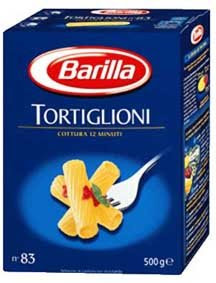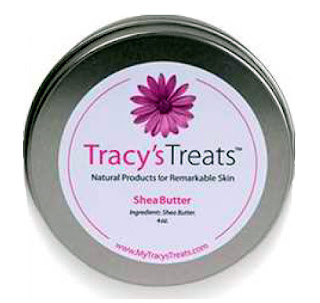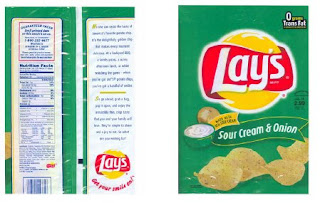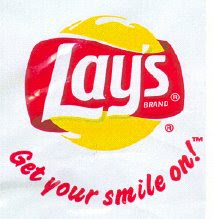Fraud was a major topic of discussion at INTA Berlin after yesterday morning's presentation. Non-US attorneys and agents who may not fully understand the use-based trademark regime that exists in the United States, are trying to come to grips with the problem. And so it seems like a good time to re-post this article. A pdf version may be found
here.
Unfriendly Shores? Recent Developments in U.S. Law May Trouble Foreign Trademark Ownersby John L. Welch and Ann Lamport HammitteLowrie, Lando & Anastasi, LLPForeign trademark owners who seek registration in the United States may be troubled by several recent developments in American trademark law. The Trademark Trial and Appeal Board’s current fraud jurisprudence holds an applicant or registrant strictly responsible for false statements made to the United States Patent and Trademark Office (USPTO) regarding use of its mark on the goods and services involved, with very little room for error or innocence. Recent case law on the issue of an applicant’s
bona fide intent to use a mark indicates that, if a challenge is raised in an
inter partes proceeding before the TTAB, the mark owner will be expected to corroborate its assertion of such intent with documentation. And a recent federal appellate court ruling requires a foreign applicant or registrant to appear in the USA for testimony in an
inter partes proceeding involving its mark.
I. Fraud for ThoughtThe TTAB takes the position that a false statement, made in a use-based application or in a Declaration of Use, with regard to use of the mark on the identified goods or services constitutes fraud on the USPTO and renders the application or registration void
ab initio. Proof of deceptive intent is not required because the Board will look not at the subjective intent of the mark owner, but only at the “objective manifestations” of that intent.
Medinol Ltd. v. Neuro Vasx, Inc., 67 USPQ2d 1205 (TTAB 2003). The Board reasons that a false statement regarding whether a mark is in use for a particular good or service is unreasonable and inexcusable, and is material to the USPTO’s acceptance of the used-based application for publication or its maintenance of the mark on the Register. In short, had the USPTO known that the approved application or registration included goods or services for which the mark was not actually in use, the PTO would not have published the application or issued or maintained the registration in question.
This strict requirement may prove to be particularly problematical for foreign trademark owners. In most countries of the world, use of a mark is not required for registration, and therefore foreign registrations often list a broad array of goods and services, irrespective of the scope of use of the mark. For a United States owner applying in the USA, however, the registration will be limited to the actual items with which the mark is used. Indeed, in order to obtain a registration a U.S. owner must verify under oath that its mark is in use on all the goods and services in the application.
When applying under Section 44 or Section 66 of the Trademark Act and not claiming actual use, a foreign applicant will not be required to verify that it has actually used its mark on all of its listed goods or services prior to registration (although, as discussed in Part II, it will be required to state that it has a
bona fide intent to use the mark). Typically, the identification of goods and services in the U.S. application will mirror the breadth of the owner’s home country registration. Section 8 of the Trademark Act requires that every owner of a U.S. registration file a Declaration of Use between the fifth and sixth anniversaries of the registration (a six-month grace period is available), verifying that the mark is in use for all of the identified goods and services. This is where the potential problem may arise, unless the foreign owner is aware of the TTAB’s strict fraud doctrine. When filing the Declaration of Use under Section 8 or Section 71, the owner must delete every item for which its mark is not in use in U.S. commerce. Failure to do so, and the filing of a Declaration that includes goods or services that should have been deleted, renders the registration vulnerable to a fraud attack that could result in the registration being declared void as to one or more classes of goods or services.
The ground of fraud is raised frequently in TTAB proceedings, and an application owned by a foreign entity that claims use in the United States will surely be scrutinized by any adversary for compliance with US requirements. Thus foreign trademark owners, and their trademark agents and attorneys, must be aware of the recent development of the doctrine of fraud in the USA. The prudent owner, attorney, or agent will make sure that when verification of use of a mark is submitted to the USPTO, an appropriate investigation has been done and the application or registration has been amended as necessary to reflect accurately the actual use of the mark.
II. Is your intention bona fide?Foreign trademark owners often apply to register their marks under Sections 44(d) and (e) or Section 66 of the Trademark Act, relying upon a home country registration or application via the Paris Convention (or other treaties) or the Madrid Protocol, respectively, and not on actual use in this country. However, under both Sections 44 and 66, a foreign applicant must state that it has a
bona fide intention to use its mark in U.S. commerce. See Sections 44(d)(2), 44(e), and 66(a). A recent non-precedential ruling by the Trademark Trial and Appeal Board on the issue of
bona fide intent to use a trademark may have important and unexpected ramifications for the foreign applicant under Sections 44 and 66.
In what we believe to be the first ruling in which the Trademark Trial and Appeal Board found a lack of a
bona fide intent to use a mark, the Board sustained an opposition to registration of the mark IDEAS INSIDE for on-line ordering and distribution services for a host of goods, search engine services, and digital transmission services. Applicant Steven Emeny, appearing
pro se, failed to produce any objective evidence of an intent to use the mark, and his application was therefore rejected.
Intel Corp. v. Emeny, Opposition No. 91123312 (May 15, 2007) [not precedential].
Intel had opposed on Section 2(d) and dilution grounds, based on its ownership of the INTEL INSIDE mark. After discovery, it dropped those claims but added an allegation that the opposed application was invalid because Emeny lacked a
bona fide intention to use the mark IDEAS INSIDE at the time of filing his intent-to-use application under Section 1(b).
Intel had the burden to prove, by a preponderance of the evidence, that Emeny lacked the requisite
bona fide intention to use his mark in connection with the recited services. Once Intel established a
prima facie case, the burden shifted to Emeny to come forward with evidence in refutation.
The term “ bona fide” is not defined within the Trademark Act, but the legislative history of the Trademark Law Revision Act of 1988 “reveals that Congress intended the test of ‘bona fide’ to be shown by ‘objective’ evidence of ‘circumstances’ showing ‘good faith.’” The Board agreed with Intel that “applicant’s showing should be ‘objective’ in the sense that it is evidence in the form of real life facts measured by the actions of the applicant, not by the applicant’s later arguments about his subjective state of mind.”
The Board ruled that when an applicant has no documentation to show its plans to use the mark, “such an absence of clear, objective evidence is sufficient for an opposer to prove that applicant lacked the requisite
bona fide intention,” unless the applicant can come forward with an explanation as to why no such documents exist.
See Commodore Electronics Ltd. v. CBM Kabushiki Kaisha, 26 USPQ2d 1503 (TTAB 1993) [Granting Commodore’s motion to amend its Notice of Opposition, stating: “Although admittedly a close question, we hold that absent other facts which adequately explain or outweigh the failure of an applicant to have any documents supportive of or bearing upon its claimed intent to use its mark in commerce, the absence of any documentary evidence on the part of an applicant regarding such intent is sufficient to prove that the applicant lacks a
bona fide intention to use its mark in commerce as required by Section 1(b). An allegation to such effect, therefore, states a claim upon which relief can be granted.”]
The Board found that the circumstances in the
Emeny case supported the conclusion that Emeny lacked the requisite
bona fide intent. The opposed application (like eight other applications filed by Emeny and later abandoned) included “an unreasonably broad listing of goods and services” (including more that 200 items of clothing, from “anoraks” to “wrestling uniforms”). Yet there was no evidence of any business plans, nor any evidence of a single business contact with any potential partner who would supply the goods that Emeny would sell. Indeed, on cross-examination, Emeny admitted that he wanted to “make sure that nobody else [can] take advantage of those marks.” This “defensive motivation” is the type of potential abuse that concerned Congress.
Emeny wholly failed to rebut Intel’s
prima facie case. In response to discovery requests, Emeny did not divulge any business or marketing plans, or any relevant discussions. He admitted that he conducted no specific planning and never promoted or sold any goods under the mark. In short, he provided no evidence of a
bona fide intent to use the mark. Following the Board’s position expressed in
Commodore, the “failure to produce any objective evidence of an intent to use is sufficient basis for ruling in Intel’s favor.” Therefore, the Board sustained the opposition.
The ruling in
Intel v. Emeny should cause every trademark practitioner, when filing a Section 1(b) intent-to-use application, to pause and ask how he or she will substantiate a client’s claim of
bona fide intent. Are there documents available? Is there a business plan? Is there a memorandum in the file or a letter from the client setting forth some details about its intentions?
Foreign applicants may be particularly vulnerable to the
Emeny ruling, since foreign applications and registrations that form the basis for Section 44 and 66 filings often include long lists of goods and/or services for which the mark in question has never been used anywhere. A foreign owner may thus have a difficult time producing documentation or other evidence that would substantiate its stated
bona fide intention to use its mark in this country. How many applications and registrations based on Sections 44 or 66 are vulnerable to attack on the ground of a lack of
bona fide intent to use the mark in commerce? Has
Emeny opened Pandora’s Box for foreign registrants?
III. Testifying in the USA?Foreign trademark owners may be particularly surprised by a recent federal appellate court ruling that requires a foreign applicant or registrant to appear in the USA for testimony in an
inter partes proceeding involving its mark. In a controversial 2-1 decision, the U.S. Court of Appeals for the Fourth Circuit ordered a Portuguese applicant, Rosenruist-Gestao E Servicos LDA, to produce a witness to testify in the U.S. in an opposition proceeding filed by Virgin Enterprises Ltd.
Rosenruist-Gestao E Servicos LDA v. Virgin Enterprises Ltd., 85 USPQ2d 1385 (4th Cir. 2007).
Rosenruist had conducted no business in the U.S. and had no employees here. It had, however, filed an intent-to-use application in which it designated its Virginia-based attorney as its domestic representative upon whom notice may be served in matters affecting the trademark. Virgin served Rosenruist’s domestic representative with a notice of deposition, in an ultimately successful attempt to require the Portuguese company to produce a witness under Rule 30(b)(6) of the Federal Rules of Civil Procedure [i.e., a witness to speak for the corporation on designated topics of relevance] in Virginia for a deposition concerning its opposed trademark application.
Virgin sought to conduct a deposition of Rosenruist to present testimonial evidence at trial before the TTAB, but Rosenruist refused to appear. The TTAB denied Virgin’s motion to compel appearance, noting that the Board’s Manual of Procedure states that a party residing in a foreign country may be compelled to give testimony only through the procedures provided in The Hague Convention or via letters rogatory to the Portuguese legal authority.
See Trademark Trial and Appeal Board Manual of Procedure (TBMP), §703.01(f)(3) (2nd Ed. rev. 2004). Virgin then served Rosenruist’s Virginia attorney with a Rule 30(b)(6) deposition subpoena issued by the U.S. District Court for the Eastern District of Virginia pursuant to 35 U.S.C. §24. Rosenruist moved to quash, arguing that the district court lacked the authority to compel a foreign resident to appear, that Virgin was attempting to circumvent the TTAB’s procedures, and that even if the subpoena were valid, service on counsel was ineffective. Following the court’s denial of Rosenruist’s motion to quash, Rosenruist refused to produce a witness from the company itself.
Virgin unsuccessfully moved to compel, which led to the appellate court decision. The 4th Circuit agreed with Virgin that the term “witness” as used in 35 U.S.C. §24 is not limited to natural persons, and that the USPTO regulations “expressly contemplate use of Rule 30(b)(6) depositions in which the corporation is the ‘person’ named in the subpoena….” Rosenruist could not, therefore, avoid producing a 30(b)(6) witness on the basis that none of its potential designees were “personally ‘residing or being within’ the Eastern District of Virginia.” Moreover, Rosenruist’s contacts with the district were sufficient to subject it to the court’s subpoena power.
As to the TTAB’s Manual of Procedure, the Court concluded that it was not bound by the TBMP, which, in its view, “is simply a manual issued by the TTAB … which expressly acknowledges that it ‘does not modify, amend, or serve as a substitute for any statutes, rules or decisional law and is not binding upon the [TTAB].’”
Judge Wilkinson issued a vigorous and detailed dissent, strongly objecting to creation of a standard that is effectively national in scope, since many foreign owners either have appointed a domestic representative located within the 4th Circuit (Maryland, North Carolina, South Carolina, Virginia, and West Virginia) or have failed to appoint a representative, in which case by statute they have designated as their representative the Commissioner for Patents, who is located in the Eastern District of Virginia. “[F]or any foreign corporation without a pre-existing United States presence, the majority’s decision will be controlling.”
It remains to be seen whether Rosenruist will seek reconsideration by the Court of Appeals, or review by the U.S. Supreme Court. Meanwhile this decision creates a new national standard regarding attendance of foreign applicants or registrants at testimonial depositions in proceedings relating to their marks. Although this case involved a “trial” deposition, its logic would seem to apply to discovery depositions as well [notwithstanding the fact that, for discovery depositions of a foreign party, the TTAB Manual of Procedure provides for deposition on written questions (administered in the foreign country) unless the parties agree or the Board orders an oral deposition].
A foreign trademark owner who has designated a domestic representative in the geographical area encompassed by the 4th Circuit, as well as any owner who has not designated a domestic representative, may want to change its designee to one resident in another area of the United States. [The designee need not be the attorney prosecuting the trademark application]. At least then a foreign owner might avoid the precedential
effect of the 4th Circuit’s ruling and might persuade another district court or another U.S. Court of Appeals to rule otherwise. But even so, some foreign owners might find it less expensive to comply with a Rule 30(b)(6) deposition notice by sending a designee to testify in this country rather than go to the considerable expense of mounting a challenge.
U.S. parties to TTAB proceedings, on the other hand, will welcome the opportunity to require foreign parties to appear for testimony in this country. Some feel that the prior practice requiring letters rogatory and the like was overly expensive and burdensome, and gave an unfair advantage to the foreign party. For now, the tables have been turned.
IV. ConclusionThis brief article is by no means intended as an exhaustive review of these three issues. It is intended, however, to alert foreign trademark owners and their attorneys and agents that the American trademark landscape is changing in ways that may significantly affect their trademark position in this country.
Text Copyright John L. Welch and Ann Lamport Hammitte 2008.







































